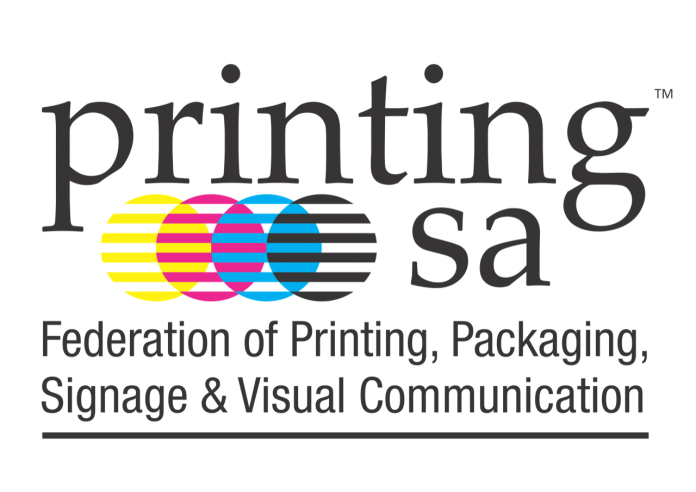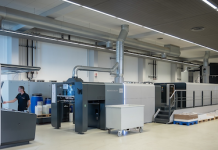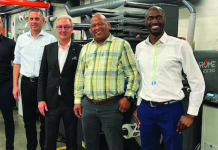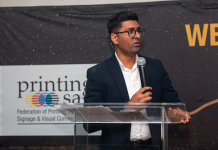Printing SA, in partnership with The Fibre Processing and Manufacturing (FP&M) SETA and the Quality Council for Trade and Occupation (QCTO), hosted a free Qualification Scoping webinar on 14 October, highlighting the training development processes as well as the training needs of the various sectors of the industry.
Panellists included:
– Mothusiotsile Segosapelo, Deputy Director: Occupational Qualification Design, Quality Council for Trades and Occupations (QCTO).
– Johnny Modiba, Quality Assurance: General Manager, Fibre Processing and Manufacturing Sector Education and Training Authority (FP&M SETA).
– Gerrie van Staden, Quality Assurance Systems Development at The National Artisans Moderation Body (NAMB).
– André Els, QA Co-Ordinator, FP&M SETA.
– Ken Leid, Director: National Training and Development, Printing SA.
Segosapelo discussed the QCTO qualification development process, saying that the organisation has received requests from FP&M SETA to develop the numerous qualifications for technicians, which include gravure cylinder preparation, lithographic printing, roll label machines, rotary printing and re-reeling gravure machines, to name a few. ‘We received a request to develop these qualifications, and are determining if we should move forward with these.’
He said that the aim is to understand the purpose of the qualifications and discuss a development framework of the qualification itself. There are various levels that qualification development follows: Normal development way, Re-alignment of existing qualification/s, Reconstruction of N4-N6 National Accredited Technical Education Diploma (NATED) as well as the review of a registered occupational qualification. All of the above starts with an application and once approved, it is followed by stakeholder confirmation through a scoping meeting. Then the development process unfolds. Components of knowledge/theory, work experience, and practical elements should be taken into consideration to develop the qualification.
Van Staden discussed NAMB’s development flow process, which includes various stages of approval processes, meetings and appointments of nominees. He also mentioned the registration of a qualification, and thereafter the development of assessment instruments, which is lengthy but efficient because it involves working with a community of expert practitioners. ‘I plead with the industry to participate, because once a qualification is rolled out, it is too late to make changes. Please get involved and be a part of it,’ he said.
It was also communicated that attendees can put forward experts to be selected for technical committees that give their input in curriculum development as well as assessment instruments development. In terms of Community of Expert Practice (CEP) nominations, stakeholders are requested to put forward names of willing subject matter experts who they would make available to serve on CEP working groups to develop the identified qualifications and assessment instruments.
‘It is critically important for industry participation to develop skills,’ said Leid, who also highlighted the results of Printing SA’s Training Needs Analysis Survey, which covered the key skills the industry has identified as a priority for development. The top 10 qualifications were highlighted, and included in a poll during the webinar.
The results of the poll on the top qualifications that should be developed:
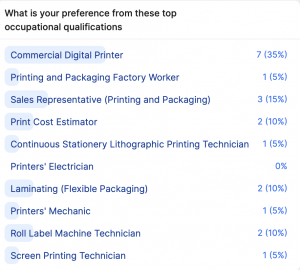
Els touched on external assessments, as well as the maintenance of data banks and instruments. To find out more about the various training and qualification processes and opportunities for stakeholder input, please watch the webinar below:
+27112871160
info@printingsa.org
http://www.printingsa.org


